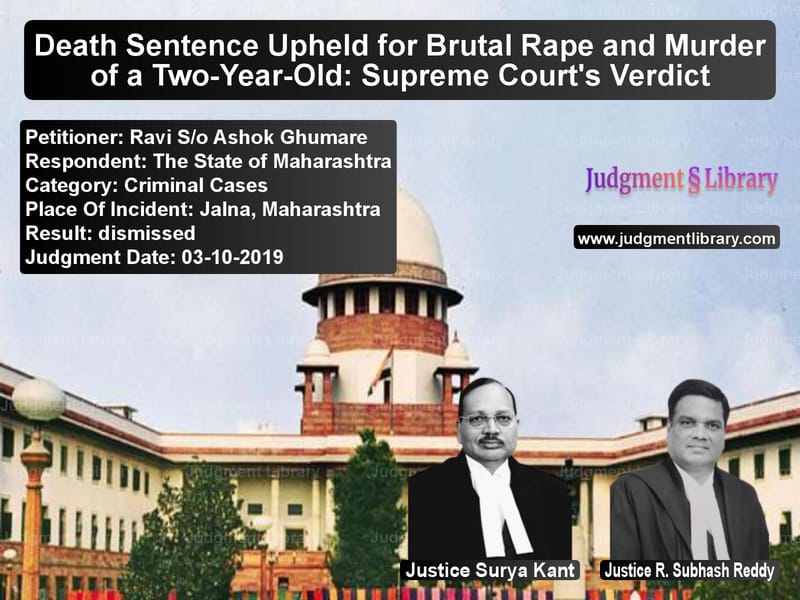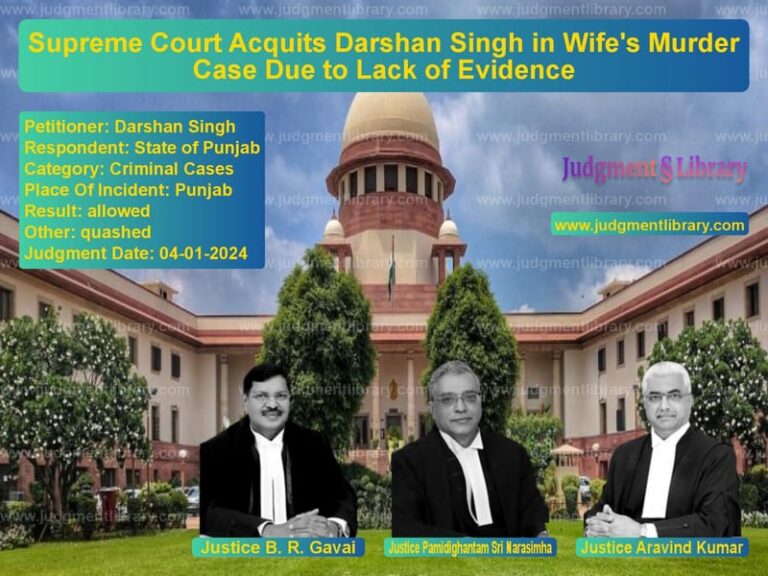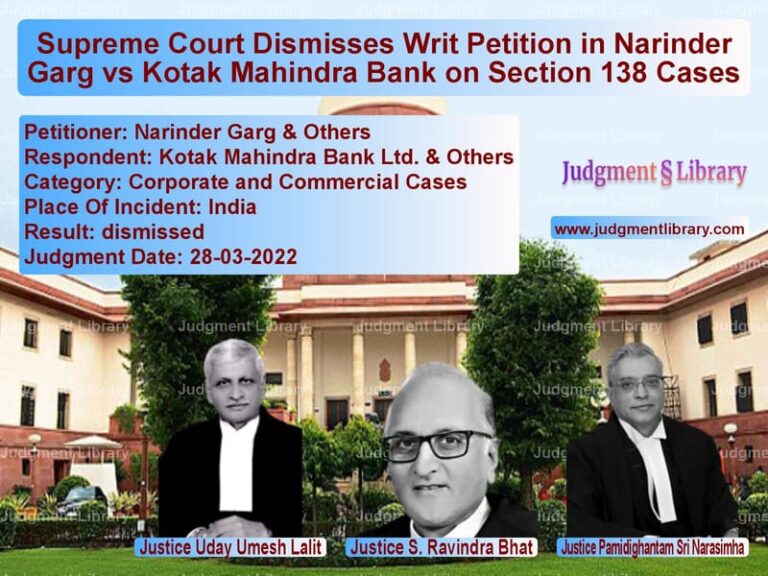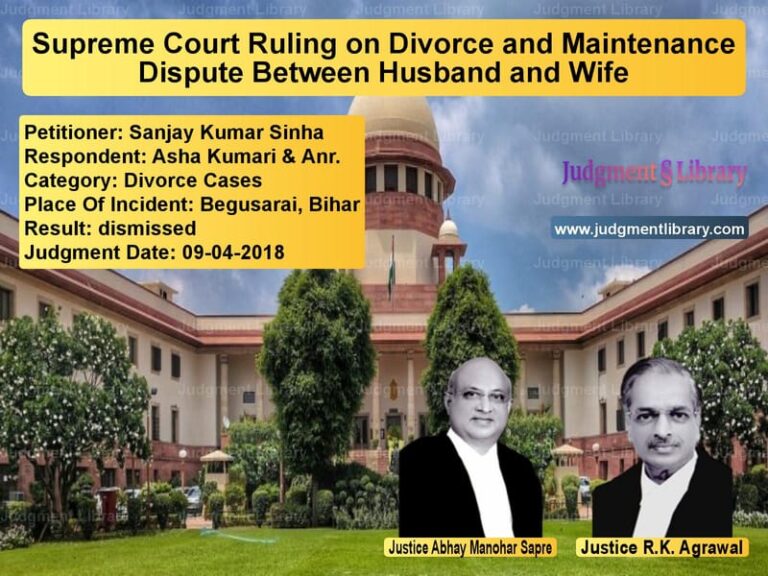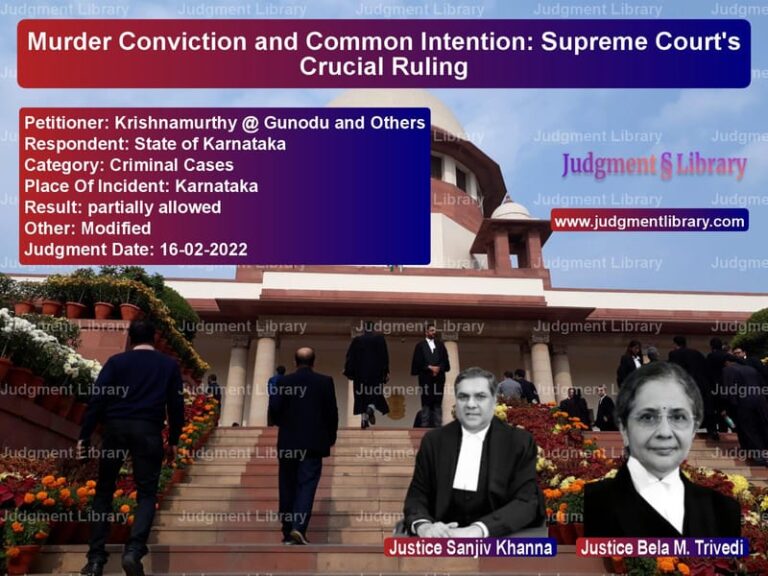Death Sentence Upheld for Brutal Rape and Murder of a Two-Year-Old: Supreme Court’s Verdict
The case of Ravi S/o Ashok Ghumare vs. The State of Maharashtra is one of the most horrifying cases of recent times, involving the brutal rape and murder of a two-year-old girl. The Supreme Court of India, in its judgment dated October 3, 2019, upheld the death sentence awarded to the appellant, considering it as a ‘rarest of the rare’ case.
Background of the Case
Incident Details
The informant, Iliyas Mohinuddin (P.W.9), a fruit seller in Jalna, Maharashtra, reported that on March 6, 2012, his two-year-old daughter went missing at around 5:00 PM. He, along with his relatives, searched for the child and later received information that the appellant was seen in a drunken state distributing chocolates to children in the neighborhood.
The police and the informant reached the appellant’s house, which was locked from the outside. Upon breaking in, they found the victim lying under a bed in a naked and unconscious condition, with blood oozing from her private parts. The appellant was also present inside the house. The child was rushed to the hospital but was declared dead on arrival.
Medical Evidence
The post-mortem was conducted by a panel of doctors, including Dr. B.L. Survase and Dr. Bedarkar (P.W.7 and P.W.8). The autopsy revealed multiple injuries on the child’s body, and the cause of death was determined to be throttling. Evidence of rape and unnatural sexual intercourse was also confirmed.
Legal Proceedings
Trial Court Verdict
- The trial court found the appellant guilty under Sections 302 (murder), 363 (kidnapping), 376 (rape), and 377 (unnatural offences) of the Indian Penal Code.
- The court ruled that the case met the criteria of ‘rarest of the rare’ and imposed the death penalty.
High Court Decision
The Bombay High Court upheld the trial court’s decision, confirming the death sentence. The court noted:
- “The crime was committed in an extremely brutal manner, shaking the collective conscience of society.”
- “The appellant had no plausible explanation for the presence of the victim in his house in a naked and injured condition.”
- “Medical evidence and DNA analysis conclusively proved his guilt.”
Supreme Court Observations
Appellant’s Arguments
- The appellant’s counsel, Ms. Nitya Ramkrishnan, argued that there were inconsistencies in the prosecution’s case.
- It was contended that there was no direct evidence proving that the child was last seen with the appellant.
- The appellant’s intoxicated state at the time of the incident should be considered a mitigating factor.
- The reliability of the DNA evidence was challenged, arguing that it did not conclusively establish the identity of the perpetrator.
State’s Counterarguments
- The prosecution emphasized that the child was found in the appellant’s house in a severely injured condition, and he had no explanation for it.
- The forensic report confirmed that the appellant’s DNA matched with semen samples found on the victim.
- The brutal nature of the crime, involving the rape and murder of a helpless two-year-old, warranted the maximum punishment.
Supreme Court’s Decision
The Supreme Court upheld the death sentence, observing:
- “The case meets the threshold of the ‘rarest of the rare’ doctrine.”
- “The appellant acted in a diabolical and revolting manner, showing extreme depravity.”
- “His actions demonstrate a complete lack of remorse and make the possibility of reformation non-existent.”
- “Scientific evidence, including DNA analysis, unambiguously establishes his guilt.”
Key Takeaways from the Judgment
- Rarest of the Rare Doctrine: The Supreme Court reaffirmed that the death penalty should only be awarded in cases where alternative punishments are insufficient.
- Significance of DNA Evidence: The ruling highlighted the crucial role of forensic evidence in confirming the identity of offenders in sexual crimes.
- Protection of Children: The case underscored the judiciary’s commitment to protecting children from heinous crimes.
- Judicial Discretion in Sentencing: While acknowledging the need for reformation in criminal sentencing, the Court maintained that certain crimes warrant the highest punishment to serve as a deterrent.
Conclusion
The Supreme Court’s judgment in this case serves as a landmark ruling in India’s legal landscape, reinforcing the importance of stringent punishment for crimes against children. The decision sets a precedent for dealing with sexual offenses against minors, ensuring that justice is delivered with the utmost severity in cases of extreme brutality.
Petitioner Name: Ravi S/o Ashok Ghumare.Respondent Name: The State of Maharashtra.Judgment By: Justice Surya Kant, Justice R. Subhash Reddy.Place Of Incident: Jalna, Maharashtra.Judgment Date: 03-10-2019.
Don’t miss out on the full details! Download the complete judgment in PDF format below and gain valuable insights instantly!
Download Judgment: Ravi So Ashok Ghuma vs The State of Maharas Supreme Court of India Judgment Dated 03-10-2019.pdf
Direct Downlaod Judgment: Direct downlaod this Judgment
See all petitions in Rape Cases
See all petitions in Murder Cases
See all petitions in Juvenile Justice
See all petitions in Bail and Anticipatory Bail
See all petitions in Judgment by Surya Kant
See all petitions in Judgment by R. Subhash Reddy
See all petitions in dismissed
See all petitions in supreme court of India judgments October 2019
See all petitions in 2019 judgments
See all posts in Criminal Cases Category
See all allowed petitions in Criminal Cases Category
See all Dismissed petitions in Criminal Cases Category
See all partially allowed petitions in Criminal Cases Category

